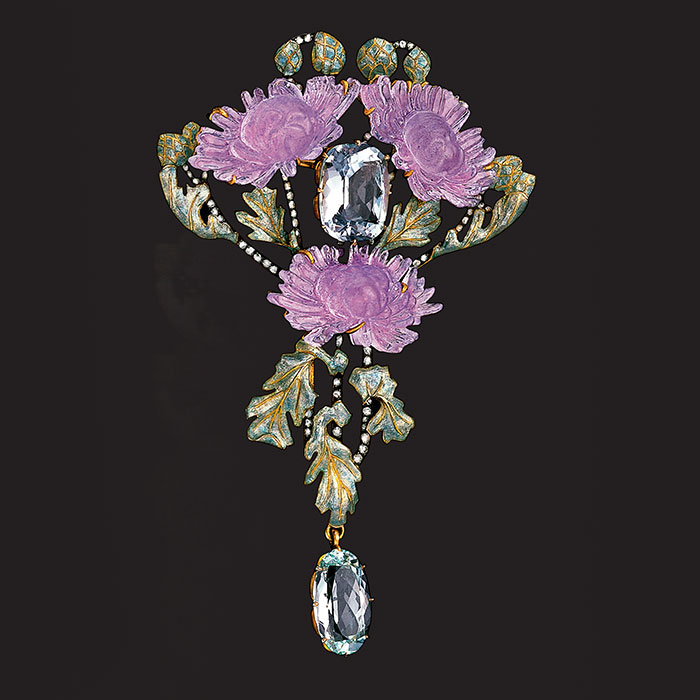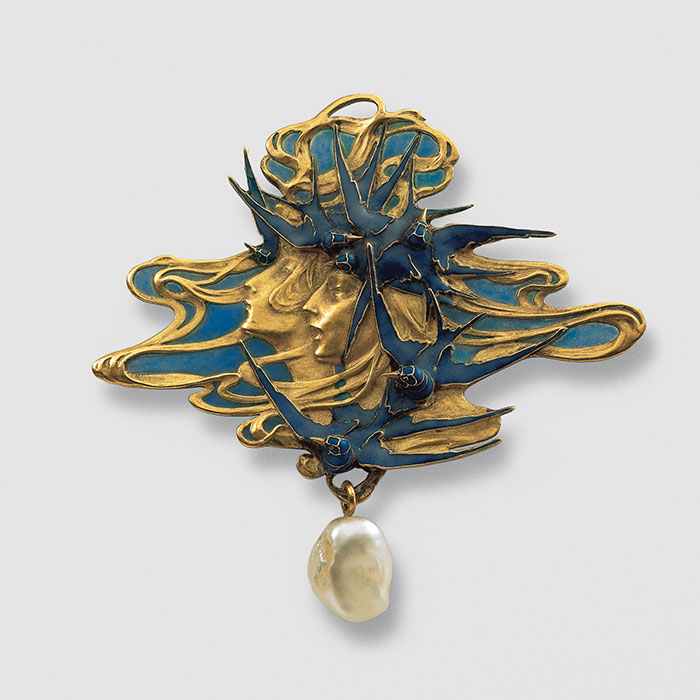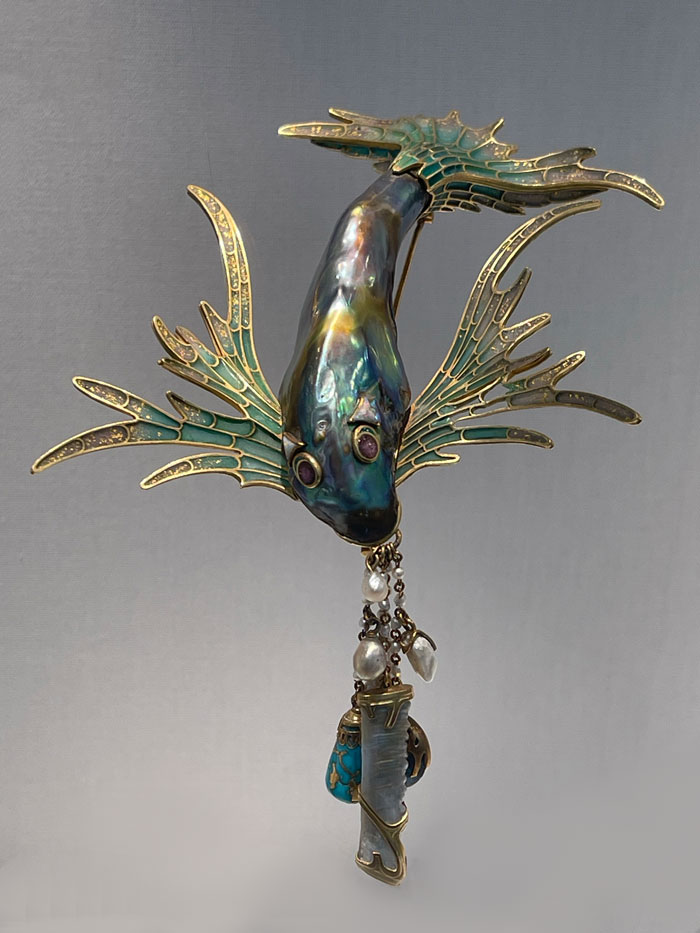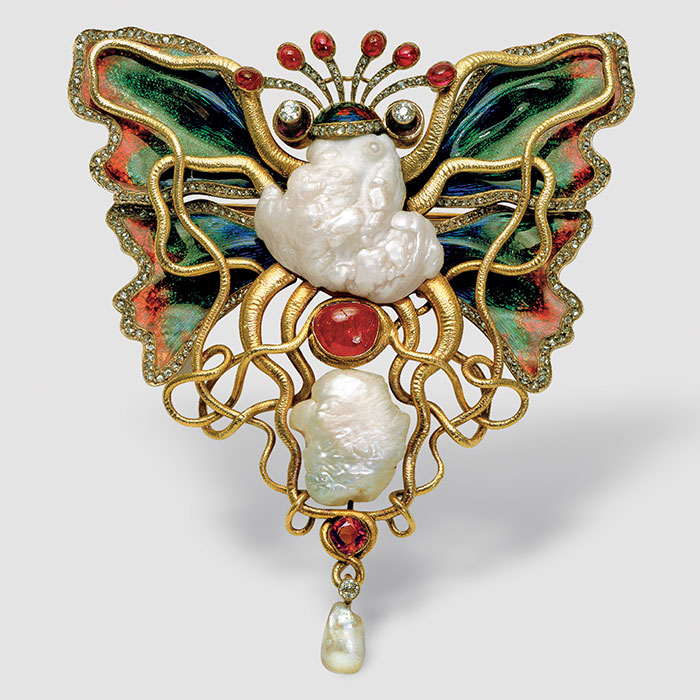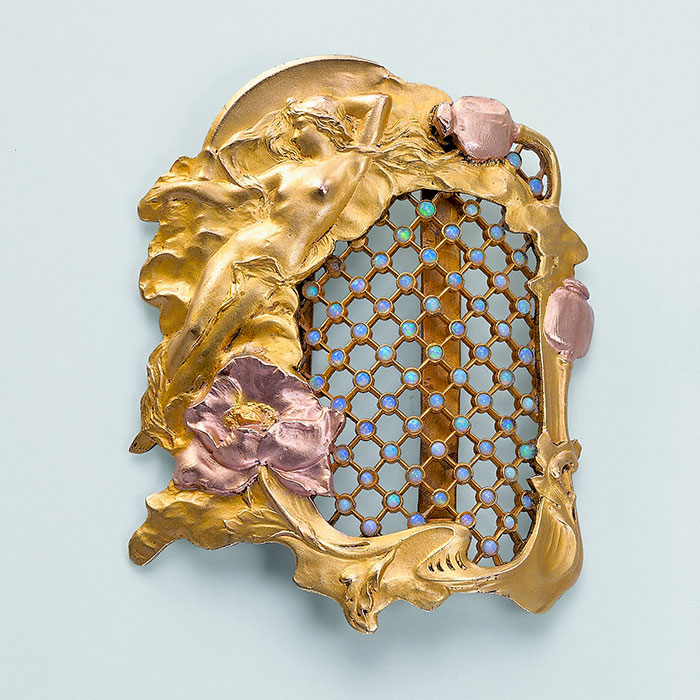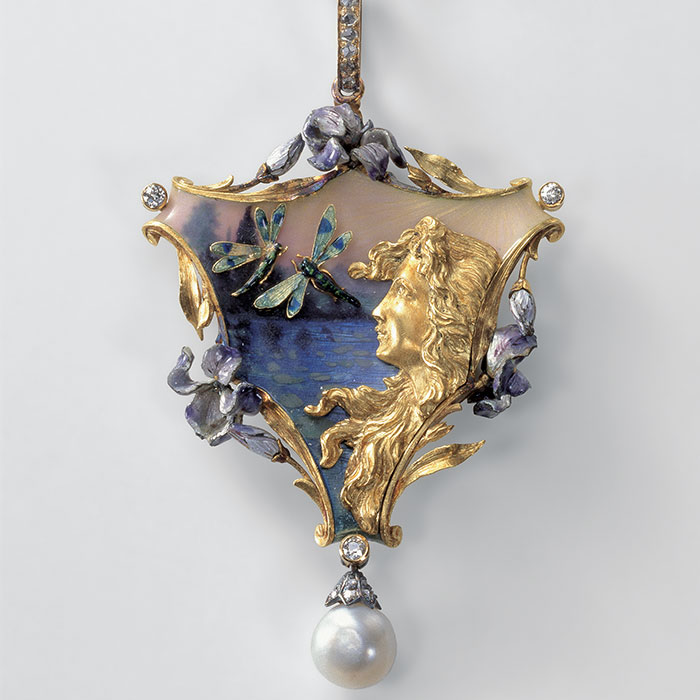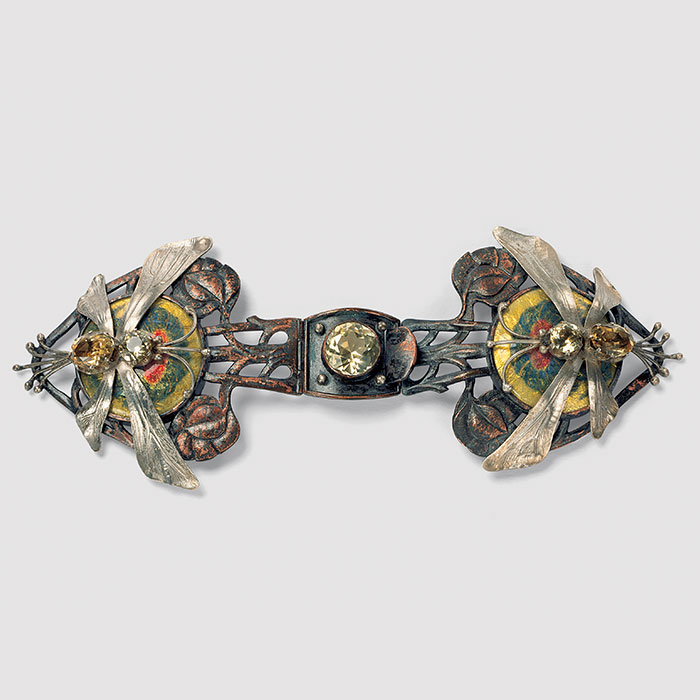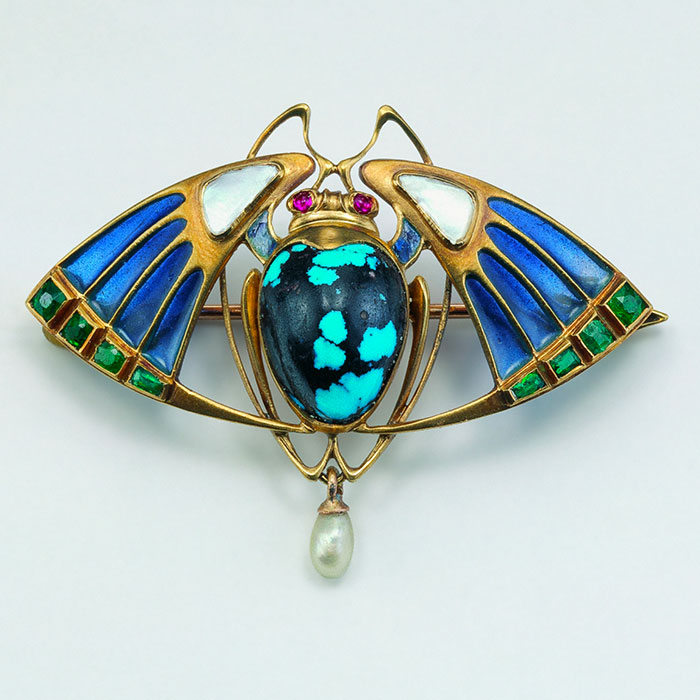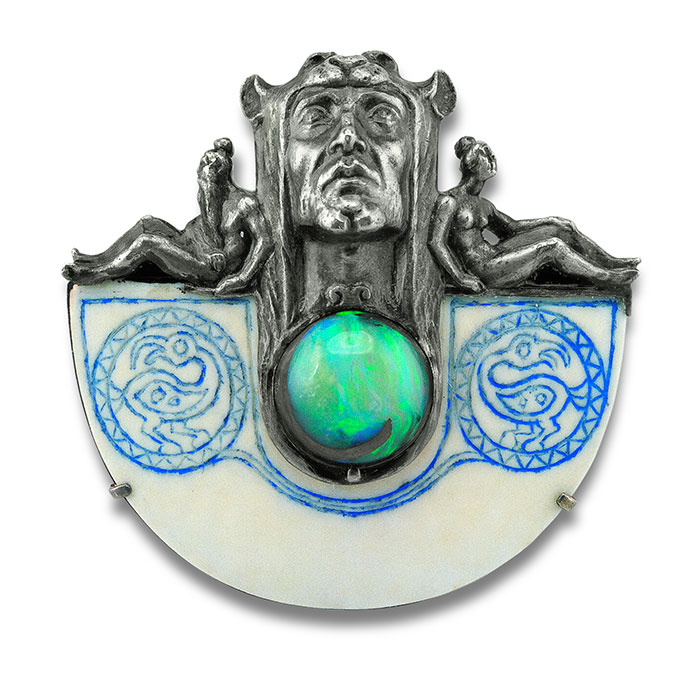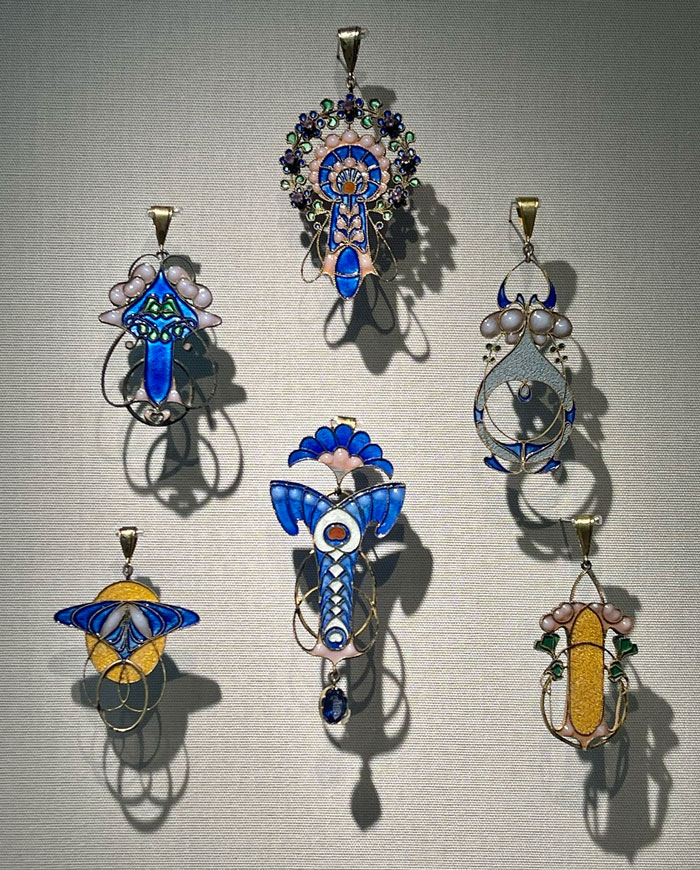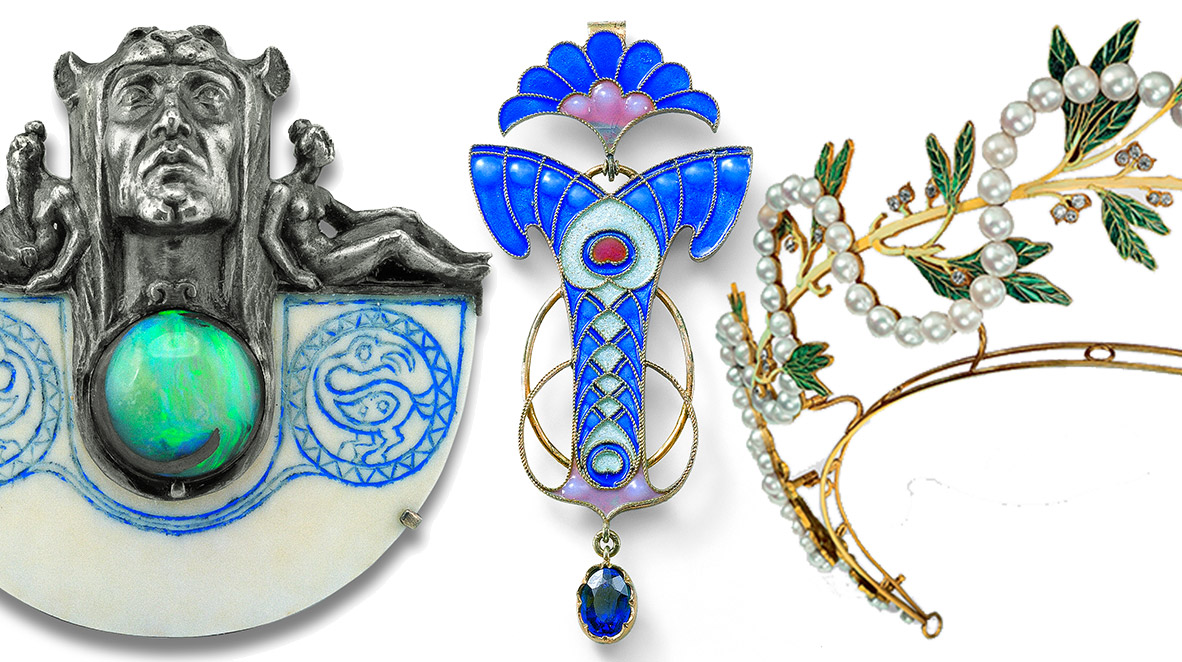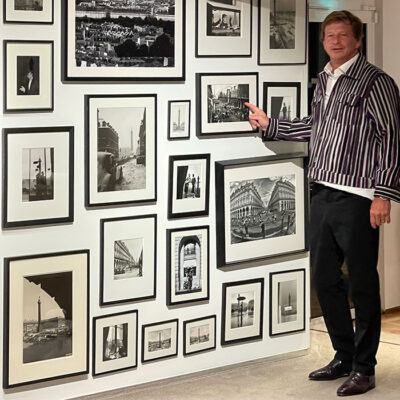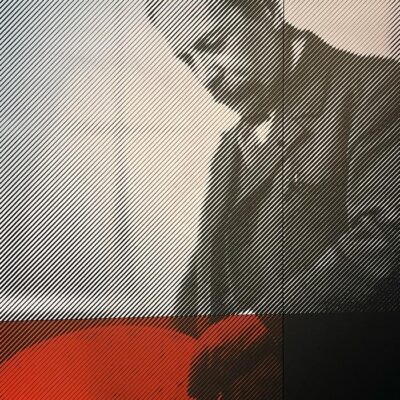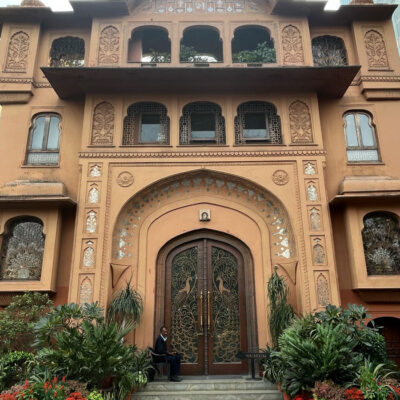Jewelers routes
30 August 2023
Share
Schmuckmuseum Pforzheim: Art Nouveau jewelry – a collection within a collection
The Schmuckmuseum Pforzheim (Pforzheim Jewelry Museum) owns 10,000 pieces of jewelry. It exhibits 2,000 of them, tracing the history of jewelry in chronological order. I was particularly interested in the section devoted to Art Nouveau. A rich collection within a collection, it presents the different European versions of this stylistic movement.
By Sandrine Merle.
You have to go back to the origins of the Schmuckmuseum Pforzheim’s collection to understand the great richness of this section dedicated to Art Nouveau, a stylistic movement that wanted to get rid of the pompous, historicizing clutter of the 19th century. It lasted barely 20 years, from 1895 to 1905. Paris was the epicenter. “Two Pforzheim institutions (the Grand-Ducal School of Decorative Arts and the Society of Fine and Decorative Arts) purchased numerous French models for the collection they had begun a few years earlier. The collection served to stimulate apprentice goldsmiths and designers in the city, then the center of Germany’s mass-produced jewelry industry, which was marketed throughout Europe,” explains Cornelie Holzach, Director of the Schmuckmuseum Pforzheim.
Art nouveau, French excellence
All the greats of French Art Nouveau are here. First and foremost, René Lalique, precursor and undisputed master. His jewels are the quintessence of this style: sinuous lines, motifs inspired by nature, often disquieting, Japanese influence, female figures hybridized with insects, atypical materials, and so on. The “Chrysanthemum” brooch is a perfect illustration, as is the brooch formed by two women’s heads, or the tiara designed as a ribbon of pearls wrapped around a branch adorned with leaves and flowers. Next up is Georges Fouquet’s extravagant pectoral, depicting a fish with an iridescent mother-of-pearl body, fins and tail in plique-à-jour enamel. And it continues with a horn comb by Lucien Gaillard, pendants by Henri Vever, Gautrait or Le Turc, a belt buckle by the Piel brothers, etc.
The Lalique Museum, the artist’s glass universe
Jugendstil, German adaptation
Pforzheim manufacturers were inspired by French models, which they mass-produced for the international market. Accusations of plagiarism and vulgarization were not long in coming, and tensions with France were high. During their visit to the 1900 Universal Exhibition in Paris, these German industrialists were so closely watched by security guards that it was impossible for them to sketch a single model! France was not to be discouraged. In 1908, one of the leading exponents of French Art Nouveau, the jeweler Henri Vever, wrote: “… and above all, the Germans flooded the whole world with deplorable Art Nouveau”. In view of the German jewels on display, this remark seems excessive, even unfair. Of course, German jewelers are no match for Lalique’s genius. Lucas von Cranach’s famous cuttlefish, formed by an enormous baroque pearl holding the enamel butterfly in its golden tentacles, lacks the French grace. Nevertheless, they invented their own vocabulary, thanks to designers like Georg Kleemann. Kleemann emancipated himself from French influence with a geometric Jugendstil featuring plant forms mixed with straight lines and angles.
Henri Vever, the Art nouveau jeweler
Art nouveau, European variations
This section also features pieces purchased from the English, including a magnificent belt buckle by Charles Robert Ashbee. Other countries represented include: Denmark, with Georg Jensen, who soon abandoned the style; Spain, with Lluis Masriera (who appropriated the style after his visit to the Exposition Universelle); Austria-Hungary, with Entwurf Otto Prutscher, by Oszkàr Tarján Huber. Their beautiful jewelry, created at the height of the Secession, is incredibly modern, resembling stylized and colorized tentacular animals. But let’s not forget the periods before and after Art Nouveau presented in this remarkable historical collection, as well as the three other collections of rings, pocket watches and ethnographic jewelry. Enjoy your visit!
You can also discover pieces from the Schmuckmuseum Pforzheim in the exhibition “Un art Nouveau – Métamorphoses du bijou” at the The School of Jewelry Arts until September 30, 2023.
In partnership with L’École, School of Jewelry Arts as part of the “Jewelry Collections of the World”.
To learn more, “The Schmuckmuseum Pforzheim”


